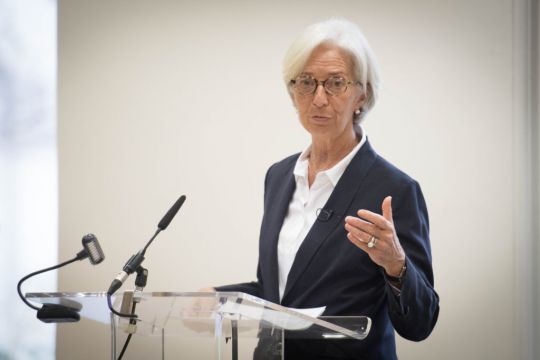The European Central Bank piled on another outsized interest rate hike aimed at squelching out-of-control inflation, increasing rates on Thursday at the fastest pace in the euro currency’s history and raising questions about how far the bank intends to go with a recession looming over the economy.
The 25-member governing council raised its interest rate benchmarks by three-quarters of a percentage point at a meeting in Frankfurt, matching its record increase from last month and joining the US Federal Reserve in making a series of rapid hikes to tackle soaring consumer prices.
The ECB has raised rates for the 19-country euro zone by a full two percentage points in just three months, distance that took 18 months to cover during its last extended hiking phase in 2005-2007 and 17 months in 1999-2000.
Central banks around the world are rapidly raising interest rates that steer the cost of credit for businesses and consumers.
Their goal is to halt galloping inflation fuelled by high energy prices, post-pandemic supply bottlenecks, and reviving demand for goods and services after Covid-19 restrictions eased.
The Fed raised rates by three-quarters of a point for the third time straight last month.
Quarter-point increases have usually been the norm for central banks. But that was before inflation spiked to 9.9 per cent in the Euro zone, fuelled by higher prices for natural gas and electricity after Russia cut off most of its gas supplies during the war in Ukraine.
Inflation in the US is near 40-year highs of 8.2 per cent, fuelled in part by stronger growth and more pandemic support spending than in Europe.
Inflation robs consumers of purchasing power, leading many economists to pencil in a recession for the end of this year and the beginning of next year in both the US and the 19 countries that use the euro as their currency.
Markets will be watching ECB president Christine Lagarde’s news conference for clues about how far the bank intends to go.
Analysts at UniCredit said Lagarde was not likely to provide clues about the peak level of rates but “we suspect that she will drop hints pointing to an increasing likelihood that rates will have to be raised into restrictive territory, and a slower pace of hikes following today’s bold move”.
At the last meeting in September, she indicated that three-quarters of a point was not the “norm” but added that decisions are being taking on a meeting-to-meeting basis. Some analysts foresee a half-point increase at the last rate-setting meeting of the year in December and think the bank may pause after that.
The ECB foresees inflation falling to 2.3 per cent by the end of 2024.
Higher rates can control inflation by making it more expensive to borrow, spend and invest, lowering demand for goods. But the concerted effort to raise rates has also raised concerns about their impact on growth and on markets for stocks and bonds.
Years of low rates on conservative investments have pushed investors towards riskier holdings such as stocks, a process that is now going into reverse, while rising rates can lower the value of existing bond holdings.
The head of the International Monetary Fund (IMF), Kristalina Georgieva, has warned that tightening monetary policy “too much and too fast” raises the risk of prolonged recessions in many economies.
The IMF forecasts that global economic growth will slow from 3.2 per cent this year to 2.7 per cent next year.
The ECB’s benchmark for short-term lending to banks now stands at 2 per cent, a level last seen in March 2009.







